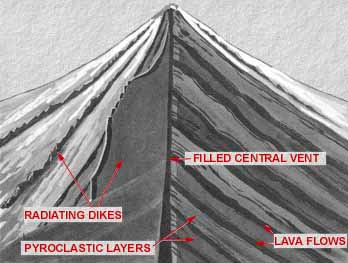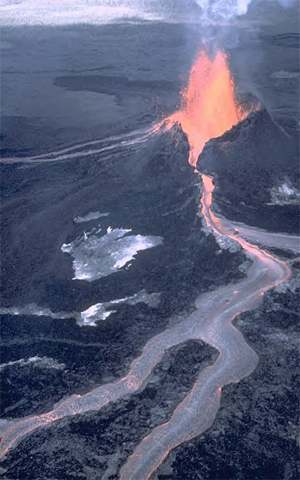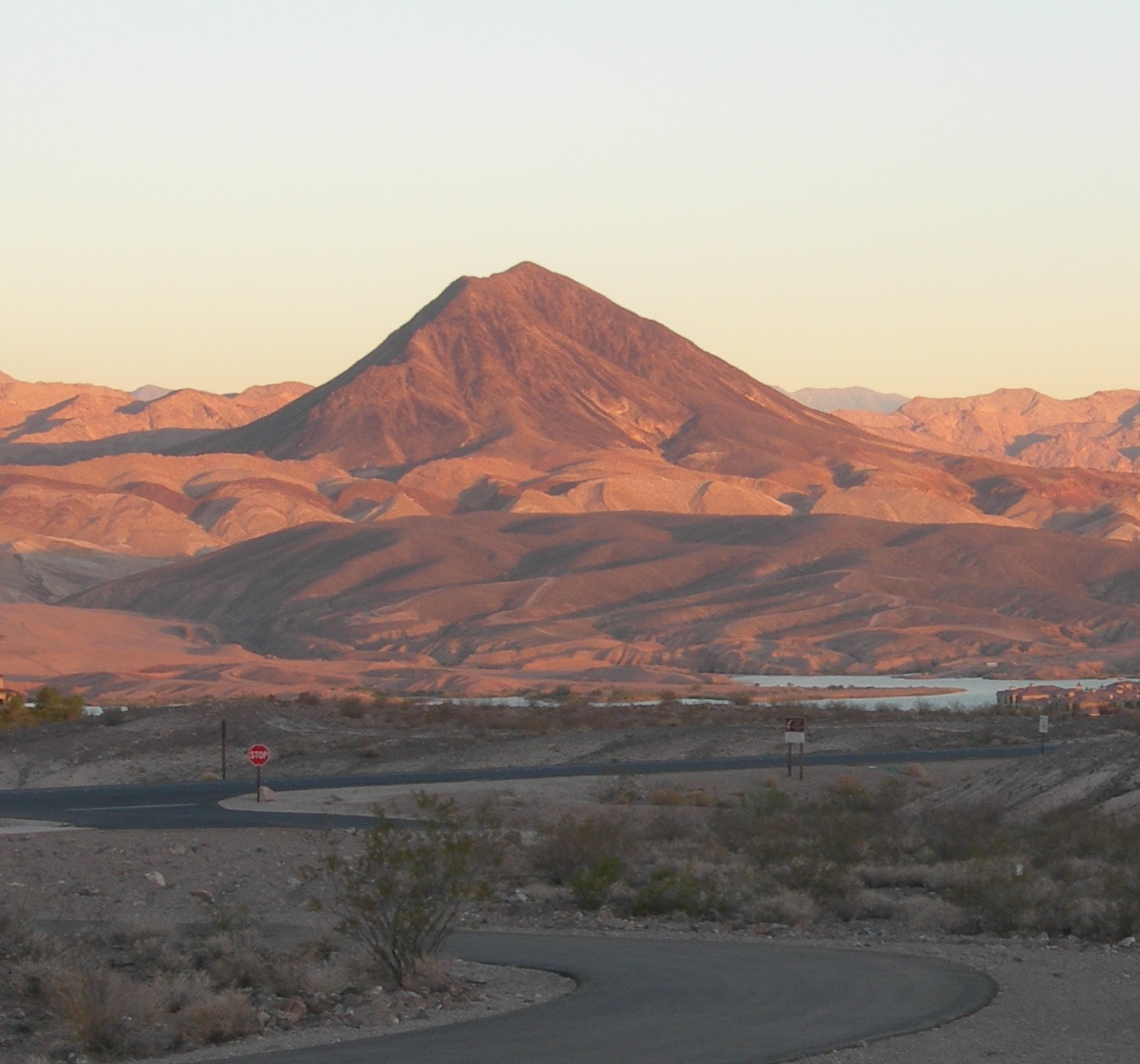Â
The River Mountains are composed of tilted and faulted mid-Miocene (15 to 12 million years old) andesite and dacite lava flows. Two volcanoes, the source of most of the lava, have been identified in the River Mountains. The first, located just north of Boulder city, is a stratovolcano surrounded by numerous domes. Stratovolcanoes are cone-shaped features composed of lava flows interbedded with abundant agglomerate and breccia that formed from explosive eruptions. The surrounding domes formed by the eruption of very sticky lava such as dacite, which erupted to the surface but did not flow.  Lava formed a low spine or a dome that quickly crumbled to a ring of debris about the dome. Â
The second volcano, located in the northern part of the River Mountains, is a shield volcano – a broad volcano composed of basaltic and andesitic lavas similar to those erupting today on the island of Hawaii. Â
Both volcanos have been tilted, cut by numerous faults, and broken into numerous parts producing a jigsaw pattern of rocks that is now very difficult to recognize. Â
The following photo is of a cinder cone just a mile north and east of the River Mountains and can be seen from the trail between MM 12 and MM 14.  Locally it is called “Lava Butte”.




